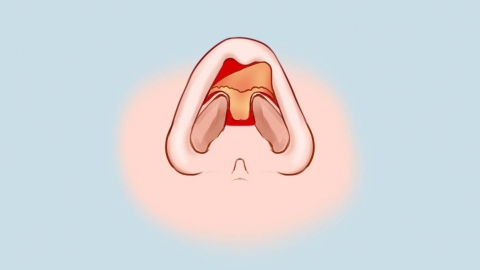What causes nosebleeds in a four-year-old child?
Epistaxis in a four-year-old child may be caused by imbalances in indoor temperature and humidity, nasal irritation from foreign bodies, upper respiratory tract infections, deviated nasal septum, or aplastic anemia. If bleeding recurs frequently or is accompanied by other symptoms, prompt medical attention is necessary. Detailed explanations are as follows:

1. Imbalanced indoor temperature and humidity: When the indoor temperature is excessively high or the air overly dry, moisture in the nasal mucosa of the child evaporates rapidly, leaving the mucosa dry and fragile, making the tiny blood vessels prone to rupture and bleed. Using a humidifier to maintain indoor humidity between 40% and 60% can reduce the likelihood of epistaxis.
2. Nasal irritation from foreign bodies: Out of curiosity, children may insert small toys, tissues, or other objects into their nasal cavities. Foreign bodies remaining in the nose for prolonged periods can irritate the mucosa, leading to localized injury and bleeding. Prompt medical attention is required, where a healthcare professional can remove the foreign body using specialized instruments.
3. Upper respiratory tract infection: Viral or bacterial infections causing colds, tonsillitis, and other illnesses can lead to nasal mucosal congestion and swelling. Sneezing or nose-blowing may cause capillaries to rupture and bleed. This is often accompanied by symptoms such as rhinorrhea, cough, and fever. Treatment options include pediatric medications such as Paracetamol, Chlorpheniramine, and Artificial Cow Elk Horn Liquid (Pudilan), or pediatric cough syrup to alleviate symptoms. Epistaxis usually improves once the inflammation subsides.
4. Deviated nasal septum: Congenital developmental abnormalities may lead to a deviated nasal septum, where the septum bends toward one side. The mucosa on the convex side becomes thin due to constant airflow impact, making it prone to rupture and bleeding. This condition is often accompanied by unilateral nasal obstruction and snoring during sleep. Mild symptoms can be managed by nasal irrigation with normal saline to maintain moisture. If frequent bleeding or severe nasal obstruction occurs, surgical correction may be considered when the child reaches an appropriate age.
5. Aplastic anemia: Aplastic anemia involves decreased bone marrow hematopoietic function, reduced production of all blood cells, and low platelet counts, resulting in impaired coagulation function. Clinical manifestations include recurrent nosebleeds, pallor, fatigue, and skin bruising. Treatment options include Cyclosporine Soft Capsules, Testosterone Undecanoate Soft Capsules, and Recombinant Human Granulocyte Colony-Stimulating Factor Injection. Severe cases may require blood transfusions or hematopoietic stem cell transplantation.
In daily life, parents should guide children to avoid picking their noses and maintain nasal hygiene. If nosebleeds occur frequently, involve large volumes of blood, or are accompanied by symptoms such as lethargy or persistent fever, prompt consultation with a pediatrician or an otolaryngologist is necessary to identify the underlying cause and receive appropriate treatment.








